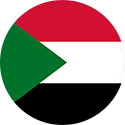Global broadband pricing league table 2022
Study of broadband pricing in 220 countries reveals vast global disparities in the cost of getting online.
Interactive map
Using the map
Countries are colour-coded by the price of broadband recorded there. You can see at a glance that CIS, the Baltics and Eastern Europe are the cheapest regions. Meanwhile, North America, Oceania and the Caribbean make up the most expensive regions in the world.
Hovering over an individual country will bring up its associated data. This includes country name, its ranking out of the 220 countries measured, the average price of a broadband package in that country, and the number of packages that were included in the data to find said average.
Why some countries are missing data
Countries where no fixed broadband services are available to buy for the home, where home broadband is not widely available, or where the currency is unstable have been excluded from the research.
This year's excluded countries are: Cocos (Keeling Islands), Central African Republic, Western Sahara, Guinea, British Indian Ocean Territory, Kiribati, North Korea, Northern Mariana Islands, Malawi, Niger, Nauru, Solomon Islands, South Sudan, Chad, Tuvalu, Vatican and Venezuela.
Related research
Cable.co.uk also undertakes annual tracking studies covering the cost of 1GB of mobile data in 230 countries, average broadband speeds in 224 countries, and the price of electricity in 230 countries. In August of 2020, we also released an in-depth report on how COVID-19 lockdown periods have affected global network speeds.
Highlights
Here is a quick look at some of the highlights unearthed in the study.

#1. Syria
Syria offers the world's cheapest broadband packages on average, due to its depreciated currency. Only 50% of the population have access to the internet, and ongoing geopolitical issues have meant a struggling market.

#2. Sudan
In second place, Sudan offers cheap internet, primarily in to its many urban areas. Fixed-line services are slow, and only around a third of the population are as a whole are online.

#3. Belarus
With over 85% of the population connected, Belarus offers cheap internet to all and also puts a heavy focus on its evolving IT sector. Speed is also on the increase due to investment in pure fibre networks.

#4. Ukraine
Ukraine's internet packages are cheap, and also very fast, as a result of a well-developed fibre infrastructure. Urban residents benefit from better connectivity than those in rural areas. Obviously, things are changing fast in the country.
The cheapest and most expensive countries in the world for broadband
Here we take a closer look at the five most expensive and five cheapest countries in the world in terms of average broadband monthly cost.
Countries in the world with the most expensive broadband
The five countries in the world with the most expensive broadband packages are Burundi (USD 429.95), Sierra Leone (USD 316.69), Brunei Darussalam (USD 258.42), British Virgin Islands (USD 184.00), and Turks and Caicos Islands (USD 170.50).
Two of the bottom five are located in Sub-Saharan Africa, one in Asia (excluding the Near East) and two in the Caribbean. The two African countries suffer from underdeveloped network infrastructure, whereas the Caribbean islands favour the more affordable mobile broadband as their main form of connectivity.
Countries with the cheapest broadband packages
The five countries with the cheapest broadband in the world are Syria (USD 2.15), Sudan (USD 4.80), Belarus (USD 7.39), Ukraine (USD 7.40) and Russia (USD 8.07).
Three of these countries are neighbours in the CIS, with one in Sub-Saharan Africa and another in the Near East.
Regions
Here we take a closer look at the average prices across 13 global regions. Each of the numbers in the following diagram is the mean price in USD for each of these regions, ordered by more expensive to cheapest.
Asia (excl. Near East)
27 countries were measured in the Asia (ex. Near East) region, which has an average price of USD 40.29. This global region covers a vast expanse and as such pricing runs the full length of the table from top to bottom. The cheapest packages were found in seventh-place Mongolia (USD 8.80), 11th-place Iran (USD 10.46), and 13th-place Vietnam (USD 10.81). The most expensive countries in the region were Brunei Darussalam (USD 258.42), Timor-Leste (USD 107.33) and Maldives (USD 72.59).
Baltics
The Baltics, comprising three countries, ranked entirely within the top 60, coming in second-cheapest overall regionally, with a regional average price of USD 19.19. Lithuania fared best in 15th place overall, with an average price of USD 11.13. Latvia followed, in 36th place overall with an average price of USD 18.08. Estonia trailed in third position, in 60th place overall and averaged USD 28.37 per month.
Caribbean
The Caribbean is a region of island nations where the average cost of fixed broadband tends to be high. The average package price is USD 78.44, with most countries featuring in the more expensive half of the table. The cheapest countries in the region were Cuba (USD 21.68, 46th), Grenada (USD 36.63, 84th), and Jamaica (USD 37.45, 86th), while the British Virgin Islands (USD 184.00, 217th), the Turks and Caicos Islands (USD 170.50, 216th), and Haiti (USD 169.58, 214th) were the most expensive.
Central America
Most Central American countries found themselves sitting in the middle of the league table. The region as a whole has an average package price of USD 43.87, but there is a wide price difference across the area. Mexico is cheapest (USD 17.82, 35th), followed by Ecuador (USD 35.00, 76th), and Nicaragua (USD 36.99, 85th). Meanwhile, the most expensive average prices in the region are found in Panama (USD 66.03, 163rd), Honduras (USD 56.00, 139th), and Guatemala (USD 54.55, 132nd).
CIS
Of the 12 CIS nations in the table, with the exception of Turkmenistan, all can be found in the top 25 cheapest in the table, making it the cheapest region in the world for broadband. The region had an average monthly price of USD 13.96. The cheapest nations were Belarus (USD 7.39, 3rd), Ukraine (USD 7.40, 4th), and Russian Federation (USD 8.07, 5th). In comparison, the most expensive countries in the region were Turkmenistan (USD 46.28, 116th), Tajikistan (USD 15.38, 25th) and Azerbaijan (USD 15.00, 22nd).
Eastern Europe
There are 14 qualifying countries in the Eastern Europe region, all bar one of which are in the top half of the table, with one (Romania) making it into the top ten, and 11 others in the top 50. Overall the region averages USD 19.90 per month, making it the second cheapest region in the world. The cheapest three were Romania (USD 9.00, 8th), Bulgaria (USD 10.67, 12th) and Kosovo (USD 15.01, 23rd). The most expensive three were Slovenia (USD 45.61, 114th), Montenegro (USD 26.06, 53rd), and Croatia (USD 23.37, 50th).
Near East
The 15 countries in the Near East measured for this year's broadband pricing league span the top to almost the very bottom of the table. The average price for the region is USD 60.62. The cheapest countries were Syria (USD 2.15, 1st place), Turkey (USD 9.32, 9th) and State of Palestine (USD 25.44, 52nd). The most expensive were the United Arab Emirates (USD 156.66, 209th), Qatar (USD 123.59, 205th) and Oman (USD 109.11, 199th).
Northern Africa
The six countries in Northern Africa all feature in the cheapest half of the table, with three countries in the top 30. The average price in the region is USD 22.41. The cheapest was Tunisia (USD 14.79, 20th), followed by Egypt (USD 16.67, 29th), and Libya (USD 17.12, 30th). The most expensive was Senegal (USD 38.00, 87th), followed by Morocco (USD 29.66, 63rd) and Algeria (USD 18.21, 38th).
Northern America
Four countries were recorded in Northern America, and all of them sit in the bottom half of the table. The region as a whole has an average price of USD 89.44. The United States was cheapest (USD 55.00, 134th), followed by Canada (USD 68.26, 166th) and Bermuda (USD 115.00, 201st). Greenland was the most expensive in the region (USD 119.51, 203rd).
Oceania
Of the 16 qualifying countries in Oceania, most were in the bottom half of the table. The region has an overall average price of USD 85.14. The cheapest in the region was Fiji (USD 35.78, 80th), with Tonga in second place (USD 38.47, 91st), and New Caledonia (USD 40.26, 93rd) in third. The most expensive in the region was Vanuatu (USD 163.89, 212th) followed by Christmas Island (USD 163.48, 211th) and Samoa (USD 146.01, 207th).
South America
The 10 countries measured in South America span from the upper to the lower end of the table, with a regional average price of USD 55.17. The cheapest broadband in South America can be found in Colombia (USD 20.75, 42nd), Argentina (USD 20.92, 43rd), and Paraguay (USD 21.56, 45th). The most expensive packages on average are in Suriname (USD 164.46, 213th), the Falkland Islands (USD 146.87, 208th), and French Guiana (USD 51.67, 129th).
Sub-Saharan Africa
44 countries were measured in Sub-Saharan Africa, most of which sit in the bottom half of the league table. The average cost per month in the region is USD 77.70. Going against the trend somewhat were Sudan (USD 4.80, 2nd), the Democratic Republic of Congo (USD 17.50, 33rd), and Lesotho (USD 19.05, 40th). At the other end of the table, the most expensive was Burundi (USD 429.95, 220th) – also the most expensive in the world – followed by Sierra Leone (USD 316.69, 219th) and Benin (USD 169.66, 215th).
Western Europe
The 29 countries measured in Western Europe span the middle to the lower end of the table, with none in the top 50 and two in the bottom 50. The regional average price of USD 49.56 makes it the seventh cheapest of the 13 global regions overall. The cheapest in the region was Italy (USD 27.70, 58th), followed by Germany (USD 27.81, 59th) and France (USD 28.92, 61st). The most expensive was Norway (USD 89.10, 185th), followed by the Faroe Islands (USD 78.83, 176th) and Iceland (USD 69.65, 168th).
Resources
Downloadable versions of the data set (.xls), the original press release and the research methodology (.pdf)
Press release
If you wish to see the original press release for this research, you can download it here as a PDF.
Methodology
Our research methodology and notes on how to interpret the data can be downloaded here as a PDF.
Contact us
d614.jpg)
Our comments on the research